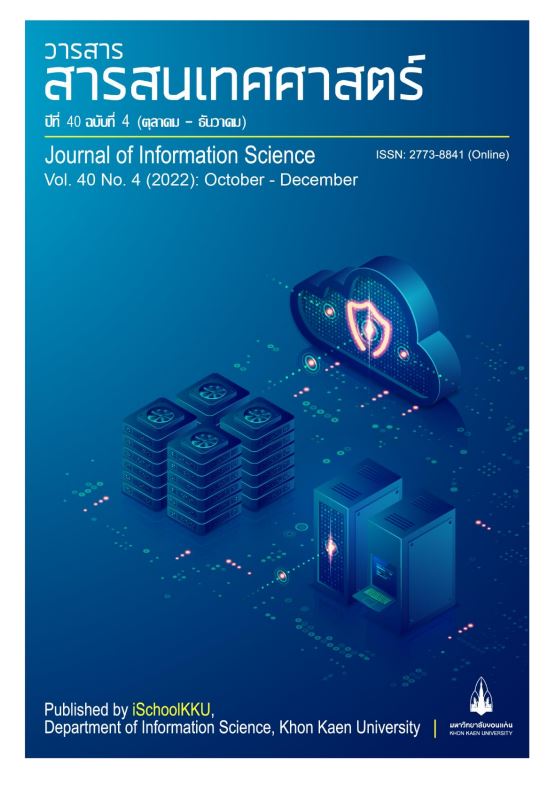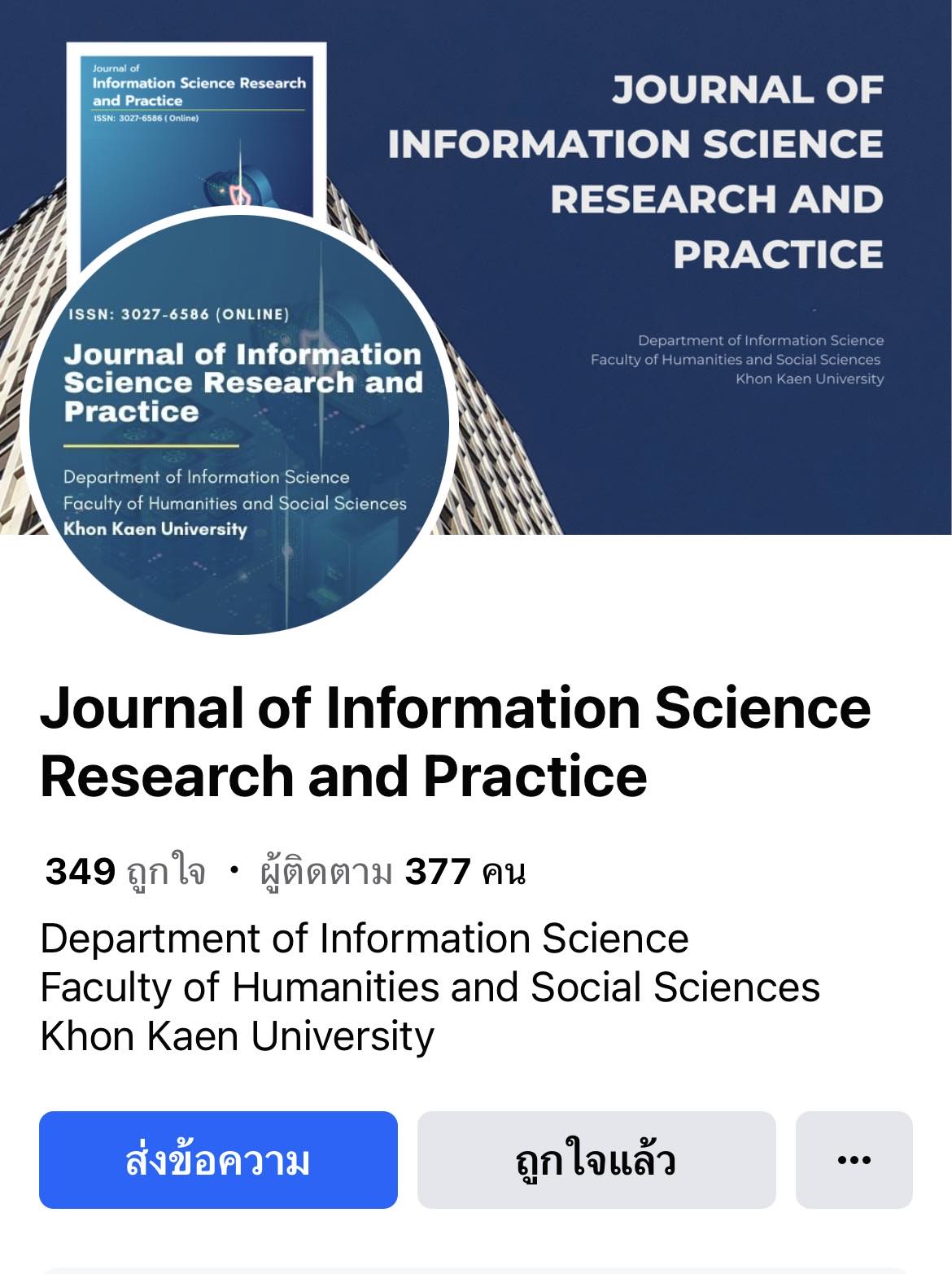Structural Equation Model of the Development Transformation Labor for Support in Machinery and Automotive Robot Technology in the Eastern Economic Corridor (EEC) Thailand
DOI:
https://doi.org/10.14456/jiskku.2022.25Keywords:
Structural Equation Model, Factors, Development, Labor, Automotive, Automotive IndustrialAbstract
Purpose: This study strived to establish a structural equation model for enhancing the development of labor forces to support the machinery and automotive robot technology transformation in the Eastern Economic Corridor (EEC)Thailand.
Methodology: The study indicators were derived from related research studies and literature reviews, and data collection was conducted through the 5-point scale questionnaires distributed to 222 top executives or their representatives of automotive industrial business located in the EEC Thailand. The collected data were thereafter analyzed using structural equation modeling.
Findings: Analysis of the data revealed that the newly developed structural equation model corresponded to the literature reviews and empirical data reporting p-value = 0.06, CMIN/DF = 1.22, GFI = 0.93, RMSEA = 0.03 and p = .01 which conformed with the set criteria for the results of variable analysis. When determining the overall impacts of the model, it was found that the knowledge element had direct effects on the skill element (DE = 0.52) and on moral (DE = 0.93). Besides, the knowledge had indirect effect on the results (IE = 0.92).
Applications of this study: Findings from this study make automotive industrial businessmen aware of the factors which lead to the development of automotive workforces in the EEC Thailand in or order to survive amid new economy and rapidly changing world.
Downloads
References
Arbuckle, J. L. (2011). AMOS 20.0 users guide. Crawfordville, FL: Amos Development Corporation.
Chege, S. M., & Wang, D. (2020). The influence of technology innovation on SME performance through environmental sustainability practices in Kenya. Technology in Society, 60, 101210.
Comrey, A. L., & Lee, H. B. (2016). A first course in factor analysis. (2nd ed.). New York: Psychology Press.
Department of Industrial Works. (2020). Industrial statistics. (In Thai). Retrieved 2 February 2021 from https://www.diw.go.th/hawk/content.php?mode=spss63
Hair, J. F., Black, W. C., Babin, B. J., & Anderson, R. E. (2010). Multivariate data analysis. (7th ed.). Upper saddle River, NJ: Pearson Education International.
Joshi, A., Kale, S., Chandel, S., & Pal, D. K. (2015). Likert scale: Explored and explained. British Journal of Applied Science & Technology, 7(4), 396.
Juntapong, S., & Pornpattanapaisarnkul, K. (2019). Upgrading Thai workers skills: a big problem in the age of technology changing the world. (In Thai). Retrieved 12 March 2021, from https://www.bot.or.th/
Thai/ResearchAndPublications/articles/Pages/
Article_20Feb2019.aspx
Kongsiriwattanakul, U. (2019). Machines and industrial robots on the direction of Thai workers. (In Thai). Retrieved 3 February 2021, from https://www.gsbresearch.or.th/wp-content/uploads/2019/10/GR_
hotissue_robot_inter_detail.pdf
Macky, K., & Boxall, P. (2007). The relationship between ‘high-performance work practices’ and employee attitudes: an investigation of additive and interaction effects. The International Journal of Human Resource Management, 18(4), 537-567.
Nanthasudsawaeng, N., Roopsing, T., & Silpcharu, T. (2020). Guidelines for private educational institute for sustainable development. Journal of Education, Prince of Songkla University, Pattani Campus, 31(3), 136-148.
Nunnally, J. C. (1978). Psychometric theory. New York: McGraw.
Parry, S. B. (1997). Evaluating the impact of training: a collection of tools and techniques. Alexandria VA: American Society for Training and Development.
Phootachot, N. (2013). Organization behavior. Bangkok: Chulalongkorn University.
Ployhart, R. E., & Moilterno, T. P. (2011). Emergence of the human capital resource: a multilevel model. Academy of Management Review, 36(1), 127-150.
Porter, L. W., & Lawler, E. E. (1968). Managerial attitudes and performance. Homewood. IL: Richard D.Irwin.
Prasertrattasin, S. (2008). Multivariate analysis techniques for social and behavioral science research. (In Thai). (6th ed.). Bangkok: Samlada.
Rovinelli, R. J., & Hambleton, R. K. (1977). On the use of content specialists in the assessment of criterion referenced test item validity Dutch Journal of Educational Research, 2(2), 49-60.
Samittikrai, C. (2013). The recruitment selection and evaluation of personnel performance. Bangkok: Chulalongkorn University.
Silpcharu, T. (2014). Statistical research and analysis with SPSS and AMOS. (In Thai). (15th ed.). Bangkok. Business R&D.
Silpcharu, T. (2017). Statistical research and analysis with SPSS and AMOS. (In Thai). (15th ed.). Bangkok. Business R&D.
Spencer, L. M., & Spencer, S. M. (1993). Competency at work: model for superior performance. New York: Wiley.
Sriangkaralap, W. (2010). Human resource management in the organization of the information age to a new organization in the future. (In Thai). Doctoral Dissertation thesis, Silpakorn University.
Subtaetrakool, V. (2018). National skill standards department of skill development ministry of labor. (In Thai). Retrieved 22 December 2018, from http://www.edu.ru.ac.th/coved/pdf/Na
Tabachnick, B. G., & Fidell, L. S. (2007). Using multivariate statistics. Boston. MA: Pearson Education.
Tamar, M. A. (2011). Skills and education to support innovation and productivities in east Asian investing in the future, creating new value. Creating New Value. Conference on East Asian Development. Singapore: Orchard Hotel.
Uthaiwan, K. (2019). Industrial machines and robots with the direction of Thai workers. Government Savings Bank Research Center.








